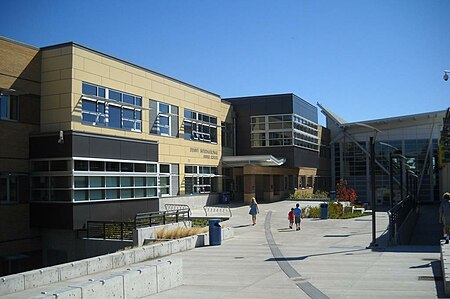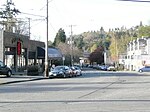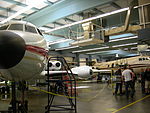Denny International Middle School
1952 establishments in Washington (state)Educational institutions established in 1952Middle schools in SeattlePublic middle schools in Washington (state)Seattle Public Schools ... and 1 more
West Seattle, Seattle

Denny International Middle School (DIMS) is a middle school in West Seattle, the southwest portion of Seattle, Washington. Operated by Seattle Public Schools. It is named for David T. Denny, one of Seattle’s early settlers and an early member of the Seattle School Board. The school shares a campus with Chief Sealth International High School (CSIHS) which together provide a joint facility for students in grades 6-12. The school's student population is racially and culturally diverse and the programs offered reflect this.
Excerpt from the Wikipedia article Denny International Middle School (License: CC BY-SA 3.0, Authors, Images).Denny International Middle School
Southwest Thistle Street, Seattle
Geographical coordinates (GPS) Address Nearby Places Show on map
Geographical coordinates (GPS)
| Latitude | Longitude |
|---|---|
| N 47.53 ° | E -122.36611111111 ° |
Address
Southwest Thistle Street 2600
98126 Seattle
Washington, United States
Open on Google Maps






